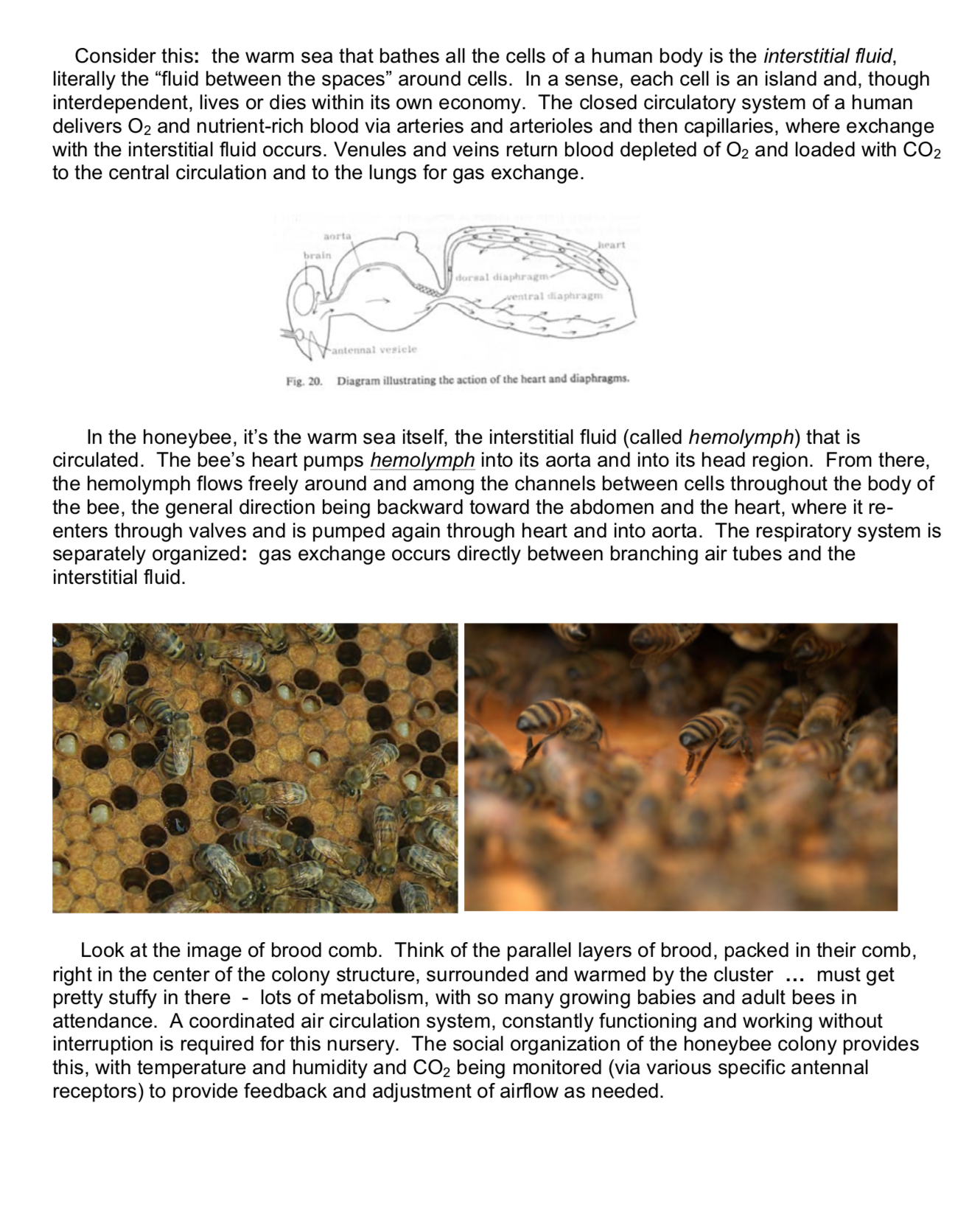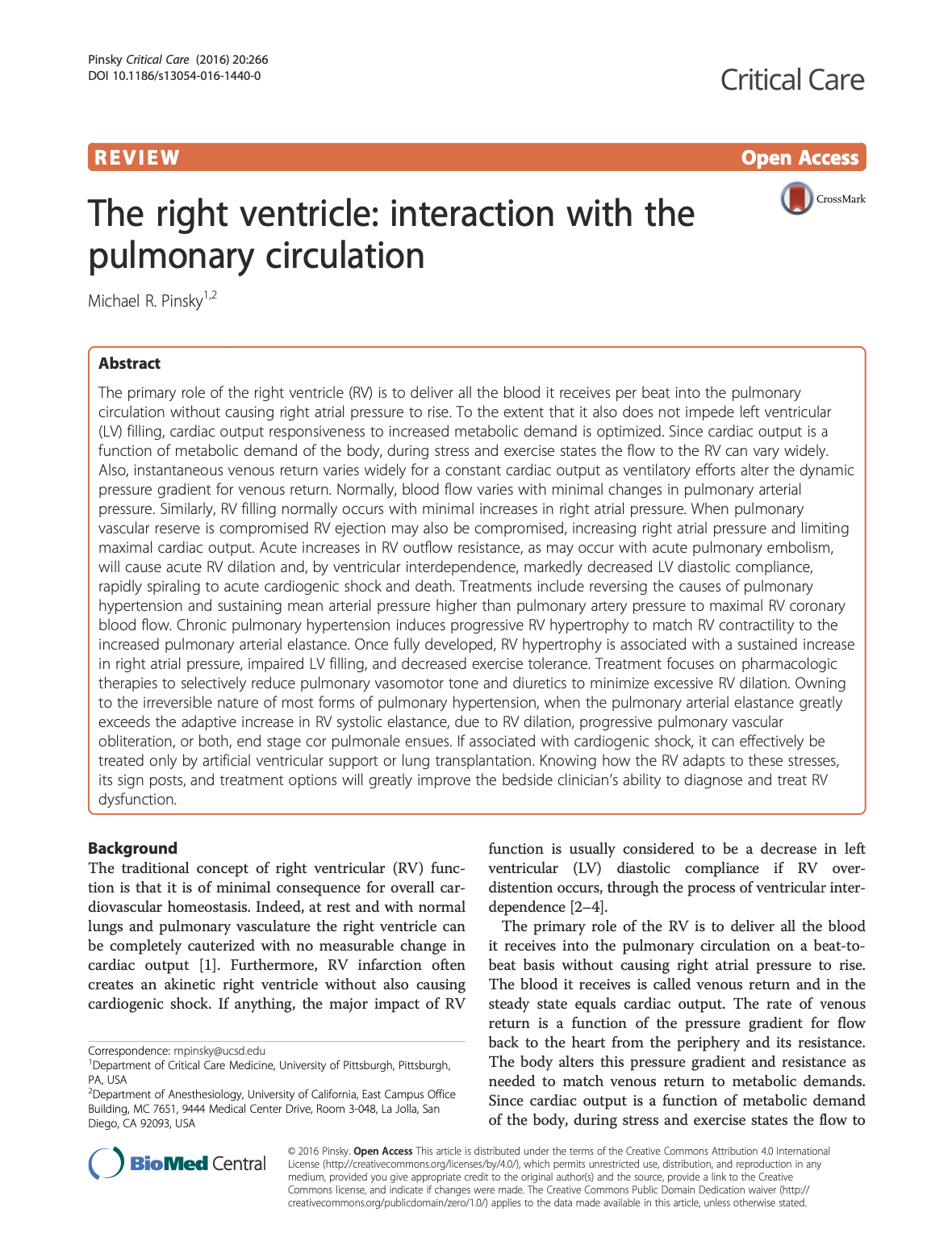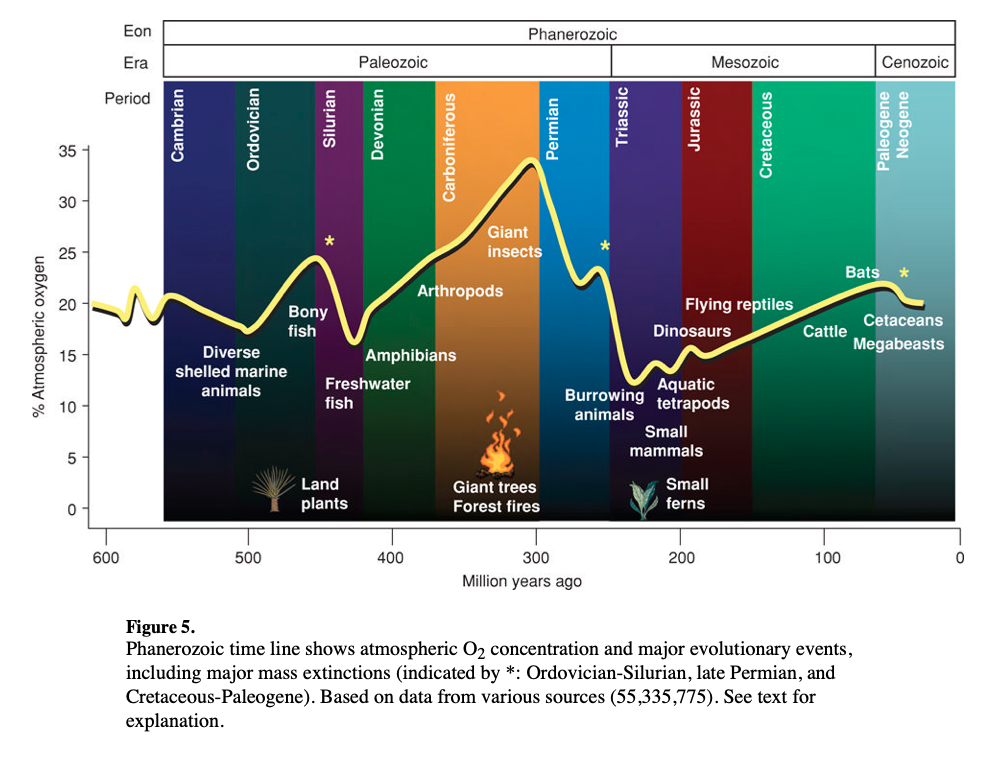excerpt:
Fanning behaviour is affected by the concentrations of respiratory gases in the nest and can be released by high carbon dioxide concentration in the colony. Honey bees have antennal carbon dioxide receptors and are stimulated by high carbon dioxide concentrations (but not low oxygen concentrations) to ventilate the nest cavity.
In natural nests the general behaviour of bees is to close all extra openings as much as possible with propolis leaving no more than one entrance kept clear for ventilation. If there is only one small entrance, continuous flow-through ventilation is not possible, yet fanning must function so as to create a net outflow of stale air and inflow of fresh air for sufficient gaseous exchange of oxygen and carbon dioxide and control of humidity. This should be comparable to normal eupnea in vertebrates with such descriptives as tidal volume, respiratory frequency, and minute volumes.
In this paper we address the question of how air is exchanged in small colonies of honey bees housed in nest chambers having only single small entrance holes, and report the nature of the ventilation and fanning response.
Tracheoles, the small tubes that form the terminal endings of the tracheal system, range from 1 to 0.1pm in diameter. Tracheoles are formed within single traeheolar cells (Fig. 3B). These tracheolar cellshave many branching processes, some of which contain an air-filled channel (the tracheole) that connects to the air-filled lumen of the tra¬ chea (Fig. 3B). Tracheole walls are capable of transporting oxygen at high rates by diffusion because they are thin (usually <0.1 pm) and have a very large surface area to volume ratio. Thus, the tracheoles are likely the major site of gas exchange between the tissues and the tracheal system.
Tracheoles are particularly dense in metabolically active tissues such as flight muscle (Fig. 4). Most tracheoles occur outside of the cells of the insects body, but sometimes in histological sections they appear to be within cells, particularly in flight muscle. These tracheoles are believed to enter the flight muscle via infoldings of the muscle plasma membrane, and so they are actually extracellular. Most tracheaoles extend parallel to the muscle fibers. The high tracheolar densities and penetration of flight muscle cells by tracheoles allow flying insects to achieve oxygen consumption rates that are among the highest in the animal kingdom.
The nest of the honey bee (Apis mellifera) - Seeley and Morse
Honeybee Democracy - how honeybees select a new home - Tom Seeley - 2011 video
Collective ventilation in honeybee nests - 2019 … full text
excerpts:
Southwick & Moritz observed that colonies in hives with small round entrances (2 cm diameter, 3.14 cm2 area) exhibit tidal ventilation in which honeybees actively draw air out of the nest entrance for a while and then stop, allowing air to passively flow back into the nest. Either entrance geometry would allow for air flow in and out; however, small entrances are more likely to favour temporal modulation of flow, while large entrances are likely to favour spatial modulation.
…
There are two behavioural components of this process that are critical to self-organized ventilation. First, the bees must (and do) fan air out of rather than into the nest entrance. This allows the bees to sense the upstream nest temperature. If the bees fanned into the nest entrance, they would have no information about the state of the hive. … Second, the switch function that determines the probability at which a bee will fan at a given temperature has likely been tuned through natural selection. If the slope of this function is too shallow, fanning behaviour is weakly coupled to temperature and no organization will emerge. If the slope is too steep, fanning behaviour can occur only over a small range of temperature.
source article
link to webpage
Giant Honeybees / Collective Lung - Kastberger - 2016
*** 7th Annual Ed Waits Respiratory Care Conference *** - 6/20/18 - video presentations
When you can't breathe, nothing else matters.
Ben Branscomb, M.D. - Pioneer in Pulmonary Medicine: collection of bio articles on this foundational pulmonologist
The Mechanical Ventilator: Past, Present, and Future - Respiratory Care 2011
Pulmonary Physiology - lecture notes - LSUMC
Anatomy and Physiology of the Lungs - Health Life Media
Pulmonary Physiology 10th ed. 2022 - Levitsky
Development of the lung - a review - Cell Tissue Research - 2017
Each single lung contains 240,000,000 alveoli … so two human lungs contain 480,000,000 alveoli.
Merck Manual: Overview of Mechanical Ventilation - full chapter
Excerpts:
Because of a high redox potential of O2 as the terminal electron acceptor in electron transport, aerobic respiration is far more efficient in energy production (36 moles of ATP per mole of glucose) than anaerobic respiration (∼5 moles). Aerobic multicellular organisms arose approximately 1 billion years ago (Ga) and more complex organisms such as marine molluscs thrived approximately 550 to 500 million years ago (Ma).
…
In working human leg muscle O2 tension at the sarcoplasmic and mitochondrial boundaries has been estimated at approximately 2.4 mmHg and muscle mitochondrial O2 concentration at half-maximal metabolic rate 0.02 to 0.2 mmHg, that is, in the range of the ancient atmospheric level approximately 2 Ga. Raising O2 tension above these levels impairs mitochondrial activity.
In this context, protection of mitochondria from O2 exposure likely constitutes a major selection factor in the evolution of complex aerobic life while the various forms of systemic O2 delivery systems are necessary but secondary functions that sustain the “gate-keeping” barrier apparatus to maintain adequate partial pressure gradients along the O2 transport cascade and preserve the near-anoxic intracellular conditions for the mitochondria.




























































